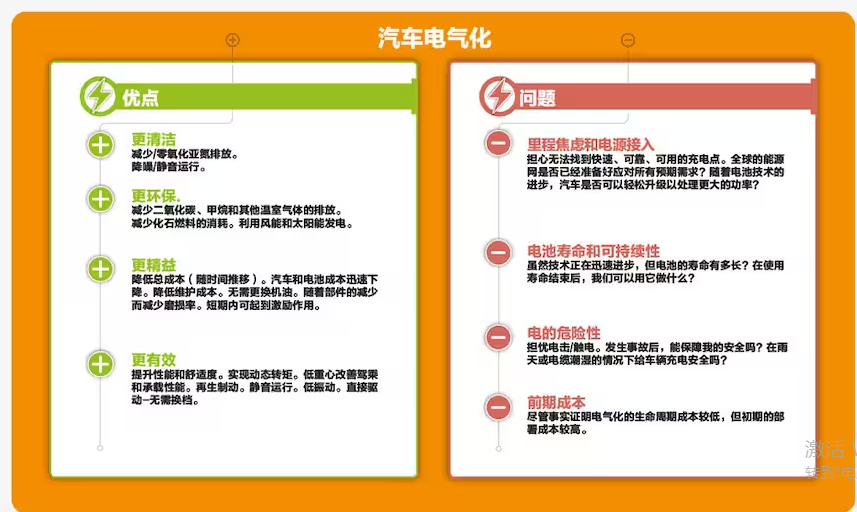推动车辆电气化 解决工业和商业电动运输车辆的充电时间问题
2023-05-25
电气化趋势与总拥有成本 随着原始设备制造商和汽车制造商推动行业创新向前发展,车辆电气化趋势持续加强。电气化带来的好处广泛而深远,它创造了一种可持续的运输模式,并且可以减少不可再生能源的使用和碳排放等等。诚然,仍存在一些障碍有待克服,包括构建广泛可用的充电基础设施、开发下一代车辆架构和解决方案以及为这一广泛的行业创新提供资金等。尽管如此,商业电动汽车面临的挑战与消费类电动汽车面临的挑战大不相同。
Electrification trends and Total Cost of Ownership The Vehicle electrification trend continues to strengthen as OEMs and automakers drive industry innovation forward. The benefits of electrification are broad and far-reaching, creating a sustainable mode of transport and reducing the use of non-renewable energy and carbon emissions. Admittedly, there are still some hurdles to be overcome, including building a widely available charging infrastructure, developing next-generation vehicle architectures and solutions, and funding this wide range of industry innovation. Still, the challenges facing commercial electric vehicles are very different from those of consumer electric vehicles.
满足客户需求是企业运营的前提条件。对于运输部门企业来说,这些需求通常可以概括为以最低成本为客户提供及时交付。企业希望在满足客户需求的同时,最大程度降低总拥有成本 (tco),以提高盈利能力和运营效率。 下图 1 中所示的每个问题都与工业和商业运输 (ict) 行业目前面临的挑战直接相关。每个问题都以某种方式影响着 tco,并且最终都会得到解决。在行业目前面临的这些关键挑战中,有一个挑战是电池电动汽车 (bev) 充电的时间问题。 在许多商业应用中,充电时间问题并不是最大的问题。像城市公交车,可以非常快速地采用全电动推进架构。美国和欧洲的许多城市正在将电动公交车用于市政应用。而在中国,大规模的电动公交车队早已不是什么新鲜事。全球目前有约 42.5 万辆电动公交车,其中 40 多万辆在中国。这些电动公交车沿着明确规划的路线行使,而在停车场都设有专门的充电站。校车也是快速采用电池电动汽车 (bev) 的领域之一。它们在一天中上路的时间不多,也按照规划好的线路行使。提供邮政服务或包裹服务的本地(最后一公里)快递公司(如 dhl、yamato transport、ups、中通和亚马逊)也有能力快速采用电池电动汽车 (bev)。 至于其他商业应用,改用电池电动汽车 (bev) 的动力并不那么足。对于提供长途货运或者客运服务的企业来说,让车辆中途停下来数个小时充电是完全不可接受的事。货物需要快速、准时到达预定地点。乘坐长途车的旅客不会乐意汽车每隔几个小时停下来,充几小时电后再上路。充电时间必须像加油时间一般短。就像美国政治家和科学家本杰明·富兰克林曾经说过的那样:时间就是金钱。长时间充电延迟会导致客户流失、吞吐量减少、收入下降。
Meeting customer needs is the prerequisite for enterprise operation. For transportation sector businesses, these needs can often be summarized as providing timely delivery to customers at the lowest cost. Companies want to minimize the total cost of ownership (tco) while meeting customer needs to improve profitability and operational efficiency. Each of the issues shown in Figure 1 below is directly related to the current challenges facing the industrial and commercial transport (ict) industries. Each problem affects tco in some way and is eventually resolved. Among the key challenges facing the industry right now, one is the time for battery electric vehicles (bev). In many commercial applications, the charging time problem is not the biggest problem. City buses, for example, can use an all-electric propulsion architecture very quickly. Many cities in the United States and Europe are using electric buses for municipal applications. In China, large-scale electric bus fleets are nothing new. There are currently about 425,000 electric buses worldwide, more than 40 0,000 of which are in China. The electric buses are run along clearly planned routes, and there are special charging stations in the parking lots. School buses is also one of the areas of rapid adoption of battery electric vehicles (bev). They don't spend much time on the road in the day and follow the planned route. Local (last kilometer) delivery companies (such as dhl, yamato transport, ups, Zto and Amazon) that provide postal services or parcel services also have the ability to quickly adopt battery electric vehicles (bev). As for other commercial applications, the power to switch to battery-electric vehicles (bev) is not so sufficient. For companies providing long-distance freight or passenger services, it is completely unacceptable to stop vehicles for several hours to recharge. The goods need to arrive at the scheduled location quickly and on time. Passengers on coaches are not happy to stop every few hours and charge them for hours before hitting the road. The charging time must be as short as the refueling time. As American politician and scientist Benjamin Franklin once said: time is money. Long charging delays can lead to customer churn, reduced throughput, and lower revenue.







